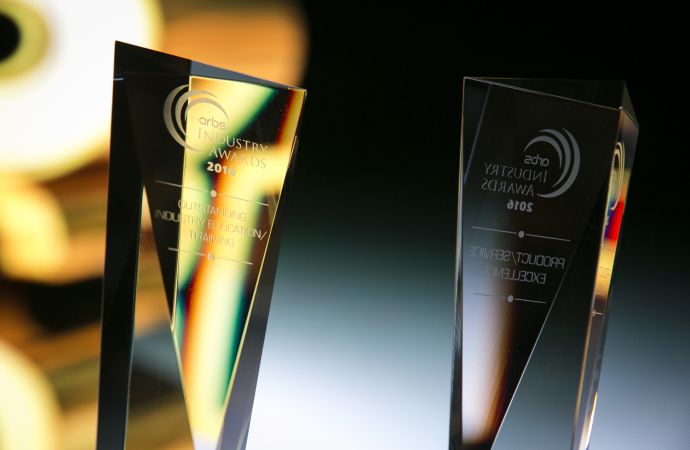GE has submitted information to the U.S. Environmental Protection Agency (EPA) to request approval to use isobutane in household refrigerators. This would allow, for the first time, the use of hydrocarbon refrigerants, already widely used in other parts of the world, also in the U.S.

GE might open up the last remaining major world market where hydrocarbons are not yet allowed, as it seeks federal approval to use the green refrigerants in household fridges and freezers built and sold in the U.S. Today, the company submitted information to the U.S. EPA to approve isobutene as a refrigerant in domestic refrigerators. The petition was filed under the Significant New Alternatives Policy (SNAP) programme evaluating alternatives to ozone-depleting substances. While isobutene and other hydrocarbons have long been accepted and marketed in millions of household refrigerators around the world, they are still banned in the U.S. due to safety restrictions. The filed request also includes cyclopentane used as an insulation foam-blowing agent to replace common HFC foam-blowing agents.
Once approved by the EPA, GE will start test marketing HFC-free refrigerators in selected locations later this year. It then plans to use isobutene and cyclopentane in refrigerators to be sold from early 2010 on. The products might be certified using the in-house “ecomagination” evalution and labeling scheme for energy-efficient products, and will comply with stringent safety standards addressing any flammability risks associated with the use of hydrocarbons. More than 300 million fridges and freezers using propane and butane are already operating across Europe, Australia, Asia and Latin America. The United States of America is the last big market not to have adopted the low global warming technology with a highly favourable energy efficiency potential, due to legal restrictions.
"The approval of isobutane under SNAP will pave the way for the use of low-GWP refrigeration technology in the U.S. to help address global warming challenges,” said Kevin Nolan, Vice President of Technology for GE Appliances.
Reactions
“Should EPA reach a favorable determination on this SNAP submittal, this could be part of the next important step in the market's transition to more environmentally friendly refrigerants," Drusilla Hufford, Director of EPA’s Stratospheric Protection Division, welcomed GE’s decision to apply for a SNAP review.
“GE is taking an important first step to making the use of efficient, low-GWP refrigerants a reality," David Doniger, Climate Policy Director for the Natural Resources Defense Council (NRDC), added.
Hydrocarbon technology moving to North America
Last month, ice cream maker Ben & Jerry’s filed petition with the EPA for a final approval of hydrocarbons in their next-generation freezers. The company has already obtained a permission to test up to 2,000 ice cream cases using butane. Leading white goods manufacturers, including Bosch/Siemens, Haier, Whirlpool, LG, Liebherr, Miele, Vestfrost, Electrolux and Sanyo, have been marketing hydrocarbon fridges for several years outside the USA.
Once approved by the EPA, GE will start test marketing HFC-free refrigerators in selected locations later this year. It then plans to use isobutene and cyclopentane in refrigerators to be sold from early 2010 on. The products might be certified using the in-house “ecomagination” evalution and labeling scheme for energy-efficient products, and will comply with stringent safety standards addressing any flammability risks associated with the use of hydrocarbons. More than 300 million fridges and freezers using propane and butane are already operating across Europe, Australia, Asia and Latin America. The United States of America is the last big market not to have adopted the low global warming technology with a highly favourable energy efficiency potential, due to legal restrictions.
"The approval of isobutane under SNAP will pave the way for the use of low-GWP refrigeration technology in the U.S. to help address global warming challenges,” said Kevin Nolan, Vice President of Technology for GE Appliances.
Reactions
“Should EPA reach a favorable determination on this SNAP submittal, this could be part of the next important step in the market's transition to more environmentally friendly refrigerants," Drusilla Hufford, Director of EPA’s Stratospheric Protection Division, welcomed GE’s decision to apply for a SNAP review.
“GE is taking an important first step to making the use of efficient, low-GWP refrigerants a reality," David Doniger, Climate Policy Director for the Natural Resources Defense Council (NRDC), added.
Hydrocarbon technology moving to North America
Last month, ice cream maker Ben & Jerry’s filed petition with the EPA for a final approval of hydrocarbons in their next-generation freezers. The company has already obtained a permission to test up to 2,000 ice cream cases using butane. Leading white goods manufacturers, including Bosch/Siemens, Haier, Whirlpool, LG, Liebherr, Miele, Vestfrost, Electrolux and Sanyo, have been marketing hydrocarbon fridges for several years outside the USA.
MORE INFORMATION
Related stories



